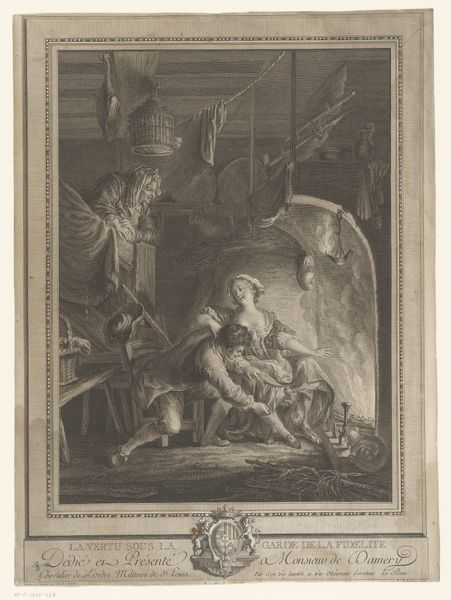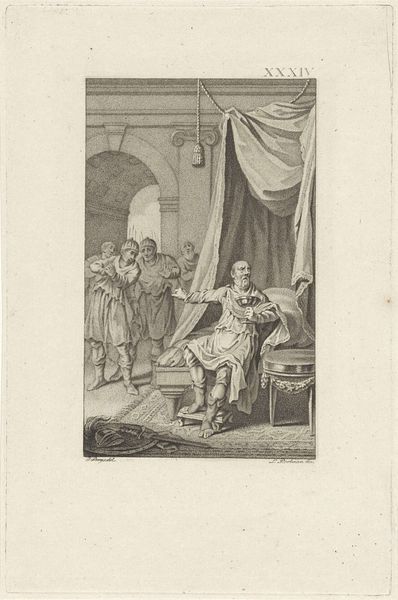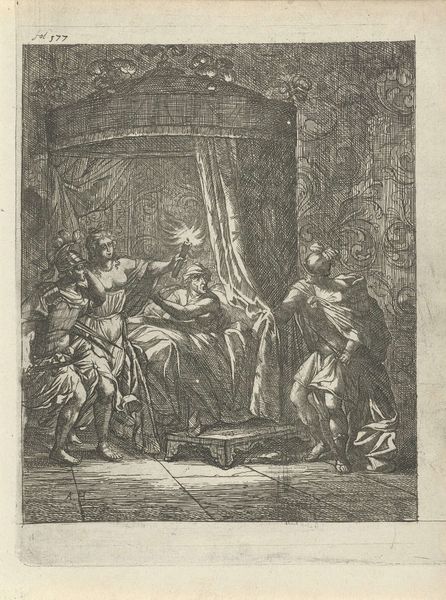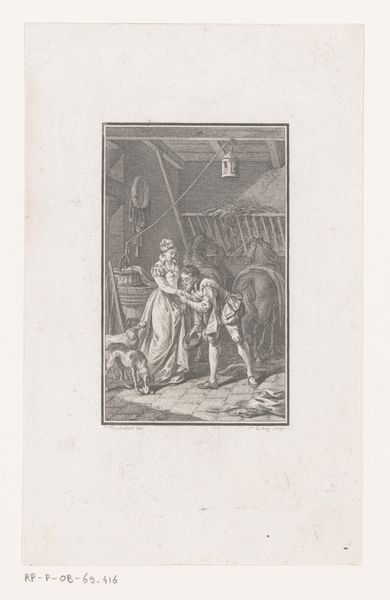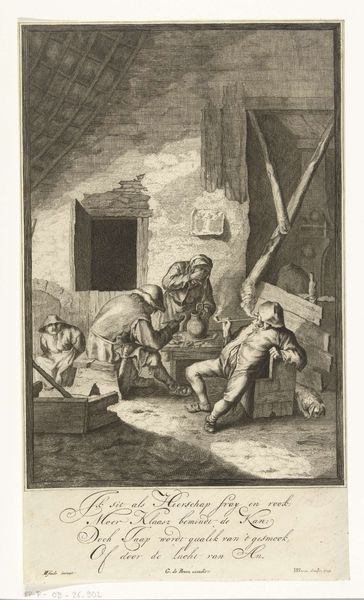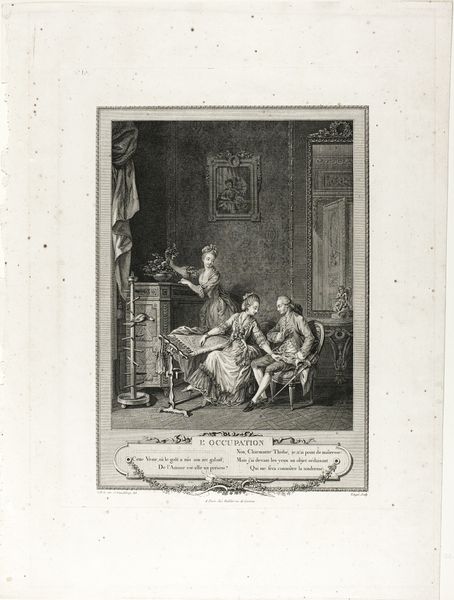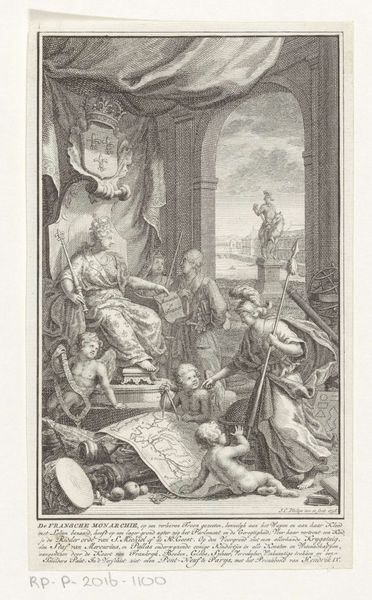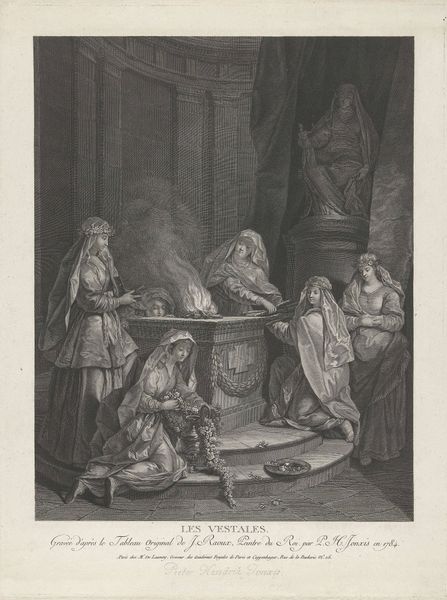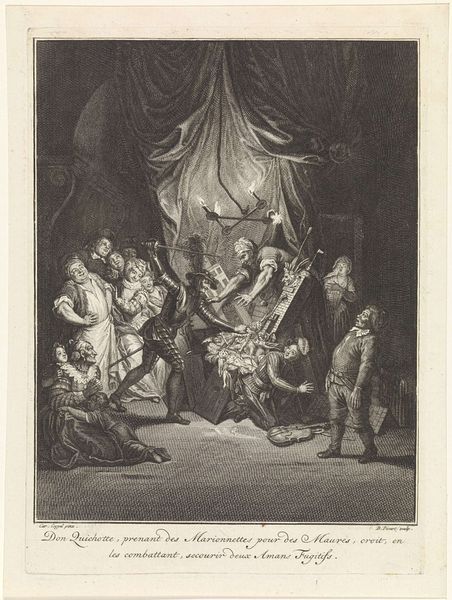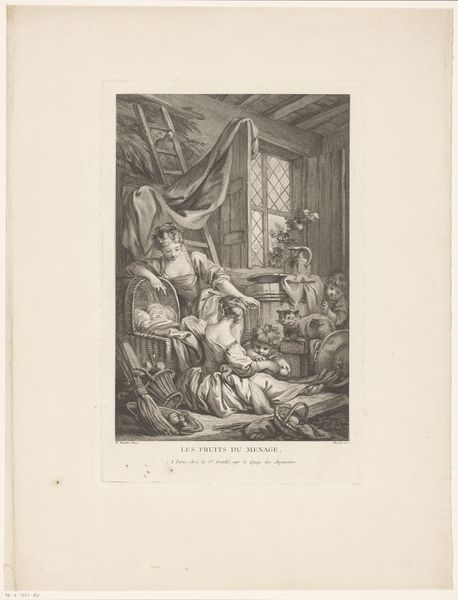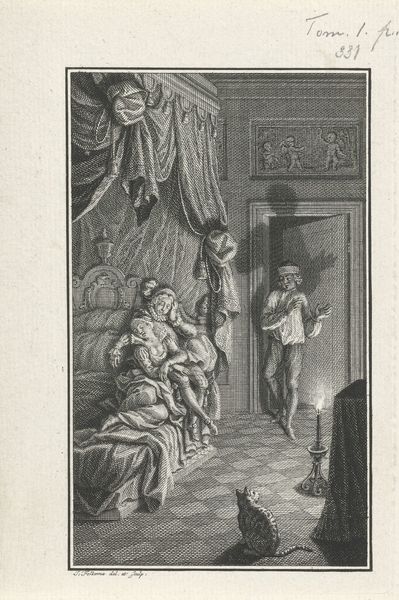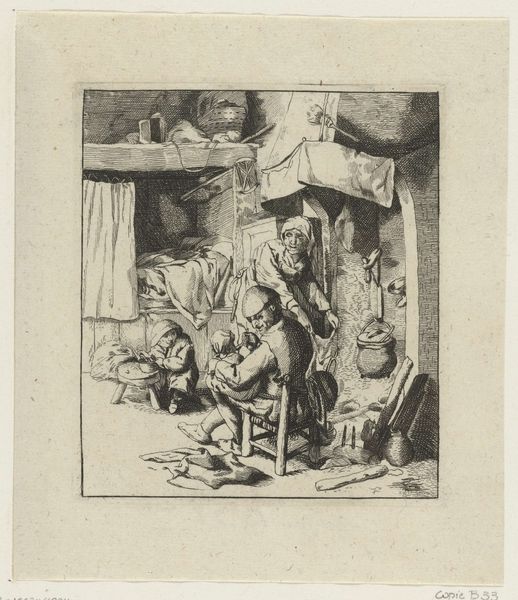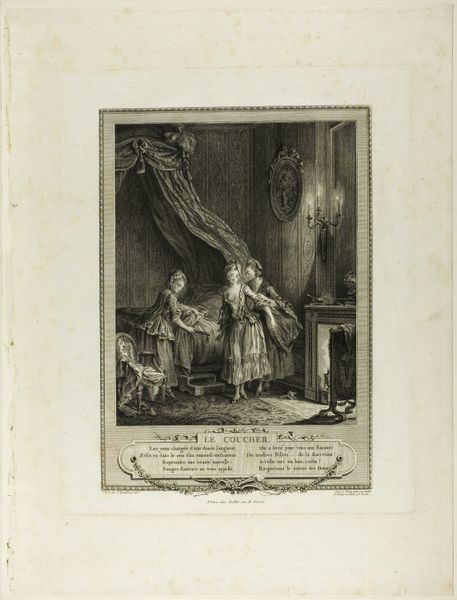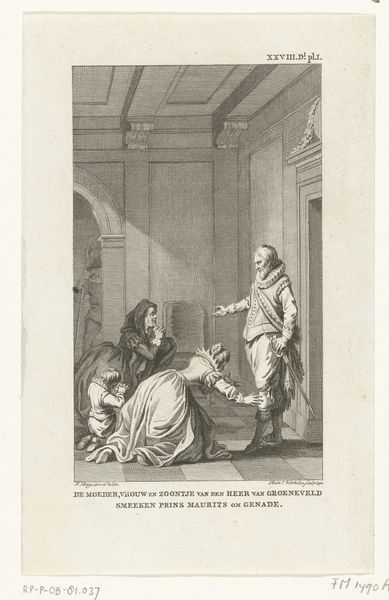
drawing, print, etching, paper
#
drawing
#
narrative-art
# print
#
etching
#
paper
#
france
#
genre-painting
#
rococo
Dimensions: 299 × 242 mm (image); 398 × 297 mm (plate); 402 × 300 mm (sheet)
Copyright: Public Domain
Curator: Here we have "Rose and Colas", a print of unknown date by Jean-Baptiste-Blaise Simonet, housed here at the Art Institute. It's an etching on paper, depicting a narrative scene in a domestic setting. Editor: My first impression is one of clandestine activity. The deep shadows and the almost stage-like arrangement suggest something hidden or illicit is occurring. Curator: Indeed. This artwork gives us a glimpse into the Rococo period in France, when genre painting—scenes from everyday life—became very popular. It suggests a certain freedom in artistic expression. Simonet allows the intersection of social norms and emerging artistic voices to give shape to how gender and class interact. Editor: And the artist's meticulousness is striking. Notice the details of the discarded spinning wheel in the foreground and then compare it to the cabbages on the stairs beside the barrel. This evokes questions about production—domestic labor juxtaposed against the products of agriculture. We are invited to see these details and recognize Simonet's deep care in the physical work needed to make such art. Curator: That's an interesting take on it. To add to that point about class, let's consider that in the period, class divisions were often reinforced through rigid social conventions. How do you view the symbolism of Rose peering coyly from behind the makeshift curtain in this context? Is this about subversion or upholding of societal roles, do you think? Editor: I see an invitation to interpret these interactions through the labor they involve. It could reveal a certain precarity. Note the roughness of the etching. The texture and contrast is raw. We’re reminded it is a hand-made art object. I think Simonet intentionally plays with surface and depth to reveal these social tensions. Curator: You know, your comments make me see it differently. The very choice of etching itself then speaks to something raw and even urgent within a culture ripe for change. Editor: Yes, seeing the emphasis on materials highlights class-based assumptions about taste and labor. Etching isn't some refined, rarified process; there's grit to it. I can appreciate your reading too, of gender roles through a changing French culture. Curator: And reflecting on the piece through materiality as you encourage, shows me Simonet’s artistic act is so inextricably connected to that historical narrative as well. Thank you.
Comments
No comments
Be the first to comment and join the conversation on the ultimate creative platform.
